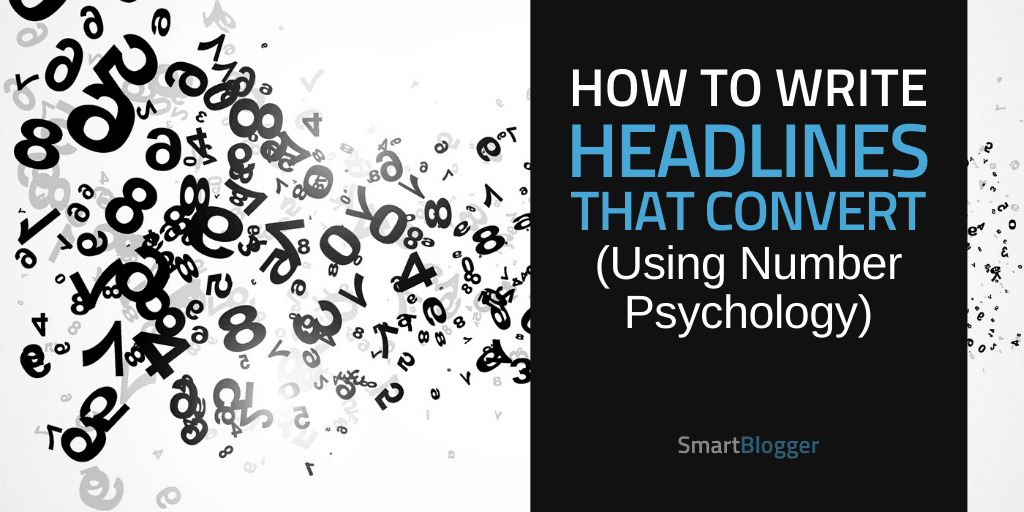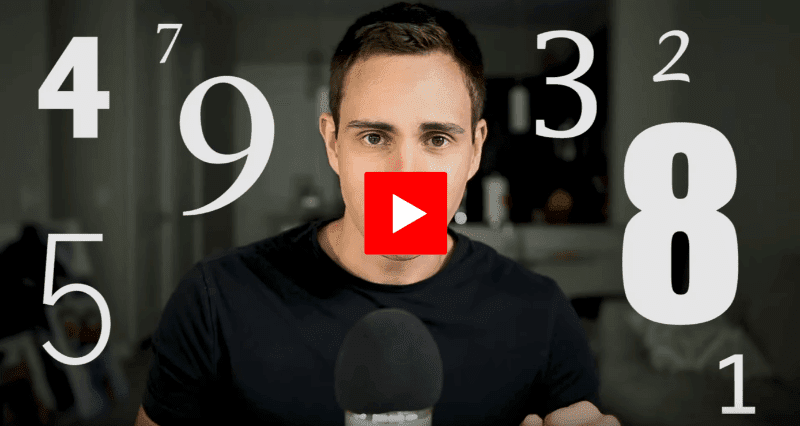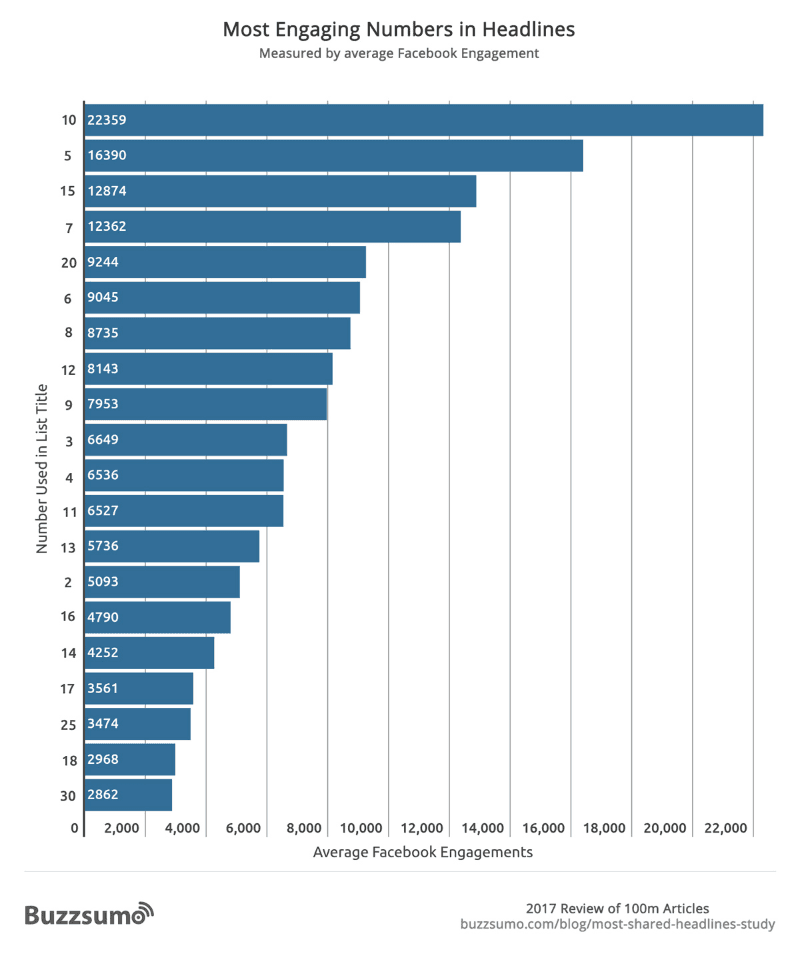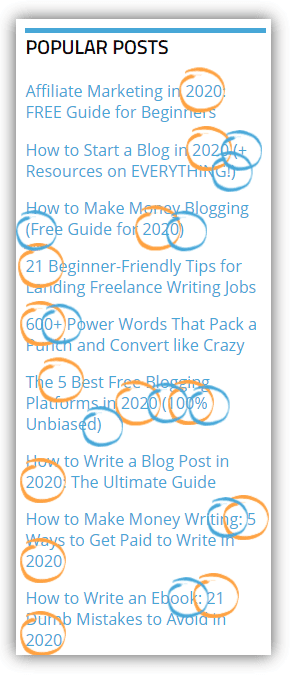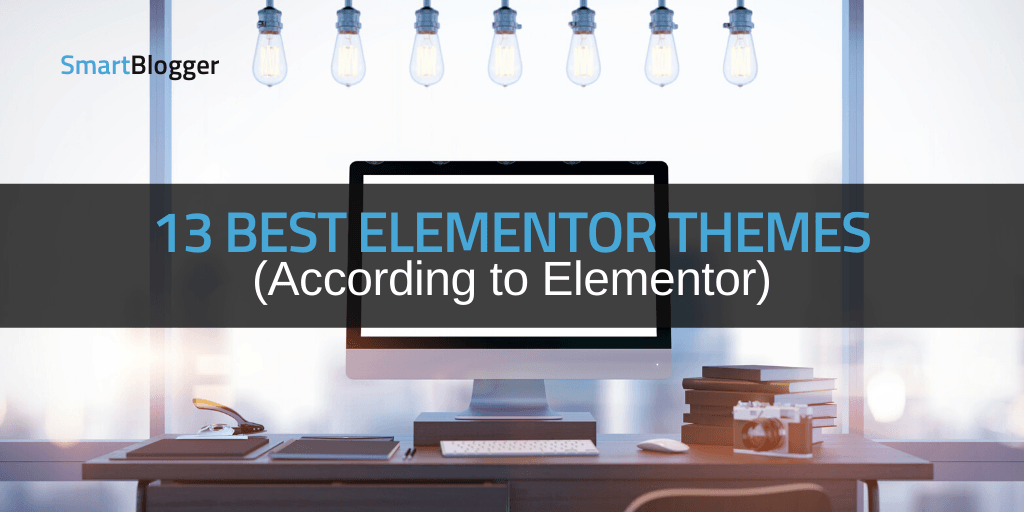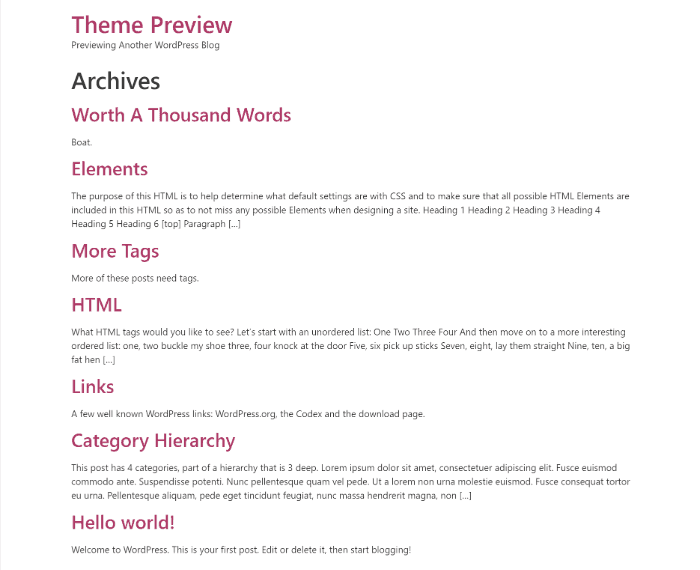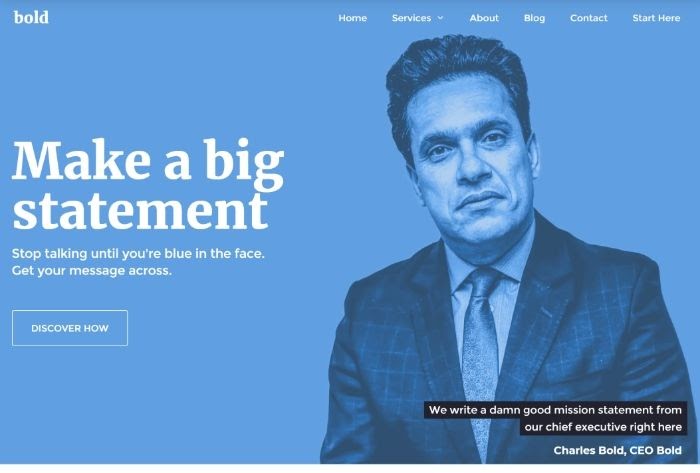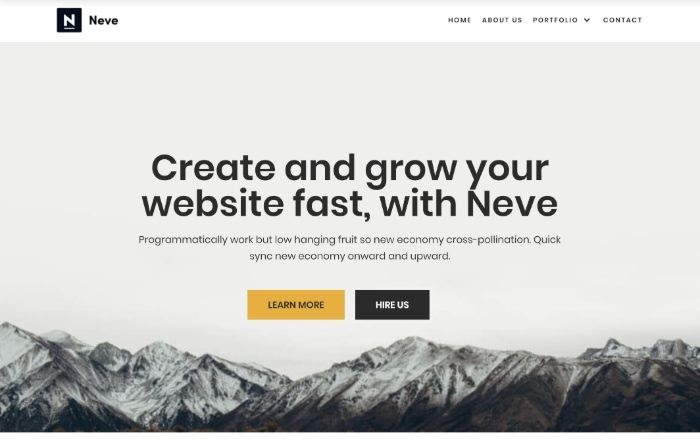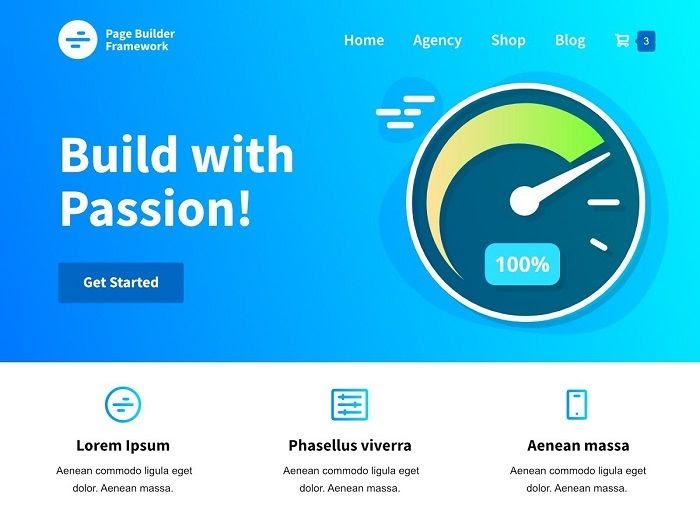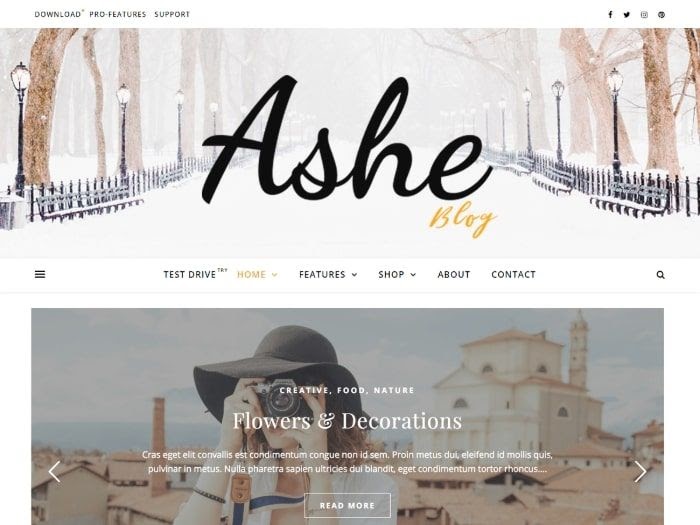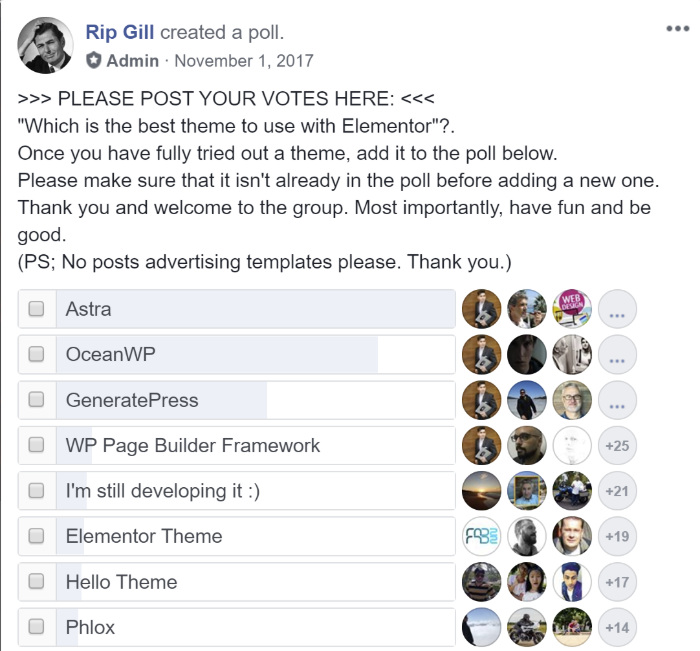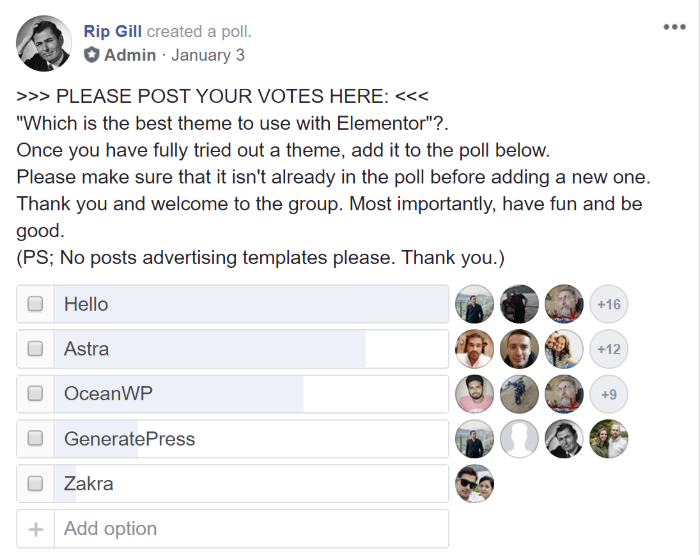Another week passes with no progress on your writing goals.
No first draft, no blog post, no portfolio piece.
Zilch. Nada.
Nauseating guilt washes over you. At the beginning of the new year you were so hopeful, even making a New Year’s resolution to write more in 2020.
But you never seem to get around to it, at least not as much as you should.
Feeling too tired, distracted, or overwhelmed to get into the flow, you procrastinate and prioritize everything but writing.
Fed up with this situation, you decide to set the best damn goals the world has ever seen.
Unfortunately, even if you’re setting writing goals that would make Tony Robbins jealous, there’s still a good chance you will fail.
Unless…
You turn one of your assumptions about writing on its head.

Goal Setting Wisdom: Vapid or Valuable?
You’ve heard it all before.
Maxims to:
- Get inspired
- Keep a positive mindset
- Visualize your outcomes
- Repeat positive affirmations
- Connect with your “why”
- Set goals (more on this below)
None of this is bad advice. In fact, these are all useful practices. But are they enough?
No.
And there’s the problem. You’re told that if you follow the conventional wisdom, set clear goals, and keep your chin up, success will be yours.
Even with all these strategies, victory is not guaranteed.
Why?
Because there is something inside you, in all of us, that will undermine your best intentions.
But, before we stroll down that dark road, let’s review the basics of goal setting. It’s a necessary first step for achieving your dreams this year.
Simple Step-by-Step S.M.A.R.T. Goal Setting
Want your goals to stand a fighting chance?
Then follow the S.M.A.R.T. formula: Specific, Measurable, Attainable, Relevant, and Time-Bound.
Let’s quickly break down each part:
Specific: Start at the Finish Line
Great goals are specific about what you’re going to achieve and when it will happen.
Ask:
“How will I know objectively that I accomplished this goal?”
Measurable: Amount of Time vs Word Count Goals
You need measurable goals that are easy to track. Examples include the amount of time spent writing (“30 minutes daily before breakfast”) and word count (“300 words daily before breakfast”).
A simple spreadsheet works well for this:
![]()
Tracking enables you to adjust your efforts and expectations based on objective data.
Another method I enjoy using is a simple Kanban style board with the easy to use (and free) writing project management tool, Trello.
Attainable: Smaller Goals vs Larger Goals
Daring to dream big is noble, but some writers are overwhelmed by bigger goals.
Balance big, inspiring (and scary) goals with smaller goals that feel attainable in the short term. These smaller, attainable goals will lead to “quick wins”, which will give you confidence to tackle the larger goals.
Relevant: Sensible in the Big Picture
You want to be an author, blogger, and start a freelance writing side hustle, but only have so much energy and attention to go around.
Choose your goals wisely. Perhaps you can publish your book in two years and start that side hustle now. Focus, Daniel-san!
Time-Bound: Know Your Goal’s Time Frame
“I’m going to write a book someday!”
Cool, good for you. Someday is a convenient synonym for never. We use it to weasel out of doing the hard work now.
Set hard deadlines to avoid this common trap.
Examples of Effective Writing Goals (S.M.A.R.T. Formula in Action)
That’s a lot of info, so let’s pull it all together. Here are a few good example writing goals:
- Blogger: Publish two posts of 2,000+ words every month on my blog in 2020.
- Freelance Writer: Apply to 5 writing gigs every week from January through June of this year.
- Aspiring Author: Complete my rough draft by December of 2020 by writing every evening at 9 pm for 30 minutes non-stop (no editing!).
See how each goal is specific, measurable, easily attainable, very relevant to the goal setter, and has a clear deadline? That’s what you’re looking for.
If you need more help, read this Hubspot article on the do’s and don’ts of S.M.A.R.T. goals.
Okay, so what if you already have killer goals, a sparkling attitude, make generous offerings to the writing gods under a full moon, and still struggle to write consistently?
You’re not alone…
One Thing You Must Rise Above
How often do you feel like writing?
Let me guess, your list of requirements to write includes:
- Feeling inspired, motivated, focused, clear, happy, and confident
- Having extra time, enough energy, peace and quiet, and no distractions
You may be asking then, “How can I set my life up so that I feel like writing more often?”
It’s not a bad question. Energy and time management practices to improve performance and mood are useful. But, this question makes an assumption, missing a deeper truth:
Who says you need to feel a certain way to write?
Other worthwhile and fulfilling achievements aren’t easy. Why should writing be any different?
Look, it’s not just you.
Somewhere along the way we all started giving “how we feel” more weight than it deserves. Sure, let your feelings ride shotgun, but don’t hand them the wheel.
Letting how you feel govern your choices places you at the mercy of what Stephen Pressfield, author of The War of Art, calls “resistance.”
Resistance is an insidious beast with many faces, and must be tamed if you’re ever going to succeed.
It’s the voice that says, “You worked hard today, go ahead and take the evening off.”
It fools you into thinking that mundane tasks are urgent, taking precedence over writing. “Afterall,” it assures you, “writing can wait until tomorrow.”
This whole mess generates a vicious cycle.
You blow off writing. Then you feel guilt, self-loathing, frustration, and sadness. This build-up of bad feelings makes you even less inclined to write — and this pattern becomes a habit.
This destructive cycle devours your dreams, one excruciating day at a time.
We must then question our habit of letting today’s feelings determine the fate of tomorrow’s outcomes.
Not to worry, grasshopper. There’s a better way.
Better Writers Know this Uncomfortable Truth
Not to be dismissive of the very real challenges in your life…
But these demands aren’t going away anytime soon, and you still want to write that book or launch that blog.
Don’t you?
If you don’t learn how to decouple your actions from how you feel, your goals will pay dearly.
The result:
- No book
- No blog
- Zero followers
- No side income
- No legacy
Because, let’s be real, these are the stakes.
What if, like Ryan Holiday suggests in The Obstacle is the Way, you take a different approach? Not only accepting difficulties as a given, but actually being grateful for them.
What I’m proposing here is to go beyond simply accepting the idea that you will have to write even when you don’t feel like it.
No. Take it further.
Seek Out Discomfort
Savor it like Hannibal Lecter enjoying chianti with his fava beans.
Because here is the secret, my friend.
How you feel will always be inconsistent, but you must become consistent in your actions regardless of how you feel.
This is the key that opens a door to the magical realm of growth and achievement.
Jon Morrow breaks this down nicely in this episode of his podcast Break Through the Noise:
“A lot of times, what success usually means is… actually putting yourself into a state of boredom, into a state of unhappiness, in order to create long term results… It’s short term pain for long term gain.”
And before you get the wrong idea…
This doesn’t have to be an exercise in masochism.
Instead, think of your competing desires like an adult with a child.
The whining child is bored and just wants to play. The loving adult speaks patiently, acknowledging that, “Yes, I know this is hard. I can see you don’t feel like it. Let’s just sit down and write for a moment. You’ll see. It will be fine.”
And you know what?
Every time you choose to act greater than your fear, laziness, and resistance, you build the habit of doing just that. Proving that you are greater than what you feel.
Okay, so how can we do that?
Your Writing Habit: Virtuous Friend or Vicious Foe?
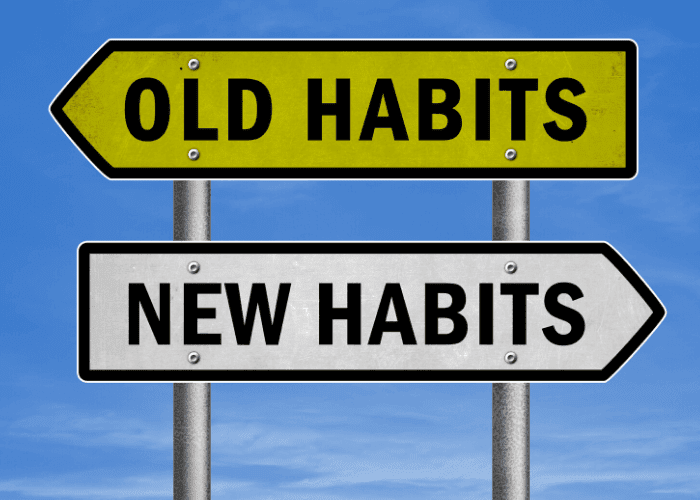
Habits are powerful.
Deeply etched upon your nervous system, they compel you to act without conscious will.
The bad news?
You already have a writing habit — a bad habit.
Remember the vicious cycle mentioned earlier? Cycles are repetitive, and repetition builds habits.
Not to worry!
Now you’ll learn how to create a new cycle — a virtuous cycle that doesn’t rely on you being in the mood to write.
Hack Your Writing Process
How you feel is often at odds with your goals.
Fortunately, there are elements in your daily life that can reliably trigger your drive to write.
There’s a scientific approach to this.
In his book Tiny Habits: The Small Changes That Change Everything, BJ Fogg provides his A, B, C framework for building what he calls “tiny habits”:
- Anchor: Something happens that reminds us to do the thing
- Behavior: Immediately do the thing
- Celebration: Immediately reward yourself for succeeding
Fogg recommends you start small.
You’re more likely to repeat the process when it’s easy and rewarding. As the behavior gels into habit you can easily scale up, leading to big changes over time.
Here’s how it looks in real life:
- Anchor: Kiss the kids goodnight (a consistent event that triggers your writing routine)
- Behavior: Consider lying on the couch and watching The Bachelorette. No, stay strong! Instead, sit at the kitchen table and write at least one sentence.
- Celebration: Reward yourself by punching the air and shouting, “I am a winner!” or tweet self-congratulatory messages: #goals #bestwriting
- Anchor: Make your morning cuppa’ Joe (this will never not happen)
- Behavior: Look longingly at your phone, imagining what you’re missing on Insta. Stop! Shuffle over to your desk, sit down, and write for 5 minutes (to start) before breakfast.
- Celebration: Eat chocolate cake for breakfast. Or, you know, just have a small piece of that fancy dark chocolate you love.
Simple, right?
Notice how you’re not trying to achieve maximum output. At least, not yet. As these routines become habit, your word count and writing times will naturally increase.
Do you see the difference between the old “feelings first” approach and this new model?
Fogg’s method does generate good feelings in the final celebratory phase of his process. There’s nothing wrong with that. But, these feelings only help reinforce what you’re already committed to doing.
The only time you need to make any decisions about whether you’re going to write is when you initially set your goals.
From then on, regardless of how you feel, just write when the anchor event happens. No deciding. No rationalizing your way out of it.
Your Shockingly Good Year
Not writing feels terrible. It eats away at your soul, undermining your self-worth.
Remember, setting goals is necessary for achieving something great this year, but it’s not enough.
You must stay vigilant, keeping watch for the antics of that wiley trickster inside you. It will say anything to keep you from writing. Because while you’re goofing off, it feasts on your dreams.
Instead, you must cultivate a writing habit — stop relying on fickle feelings to drive your progress.
And when you reach the end of the year?
Imagine how amazing it’s going to feel not only hitting, but surpassing your goals.
When you finally:
- Grow your blog
- Break into a new niche
- Multiply your income
No more sadness and frustration. No more guilt, shame, or self-doubt. And no more wondering whether you have what it takes!
You will be in control, with the power, confidence, and freedom to shape your destiny. Not only as a writer, but in all areas of your life.
If you haven’t set S.M.A.R.T. goals, do that right away. Don’t wait!
Then think about a simple routine you can start tomorrow. What trigger will remind you it’s time to write regardless of how you feel?
Remember, if it feels uncomfortable, hard, or scary then you’re on the right track.
You, the courageous writer who dines on discomfort and relishes resistance, are unstoppable.
Good luck! You got this!
The post Why You’ll Never Reach Your Writing Goals in 2020 (Unless…) appeared first on Smart Blogger.
from
https://smartblogger.com/writing-goals/
